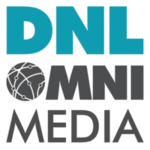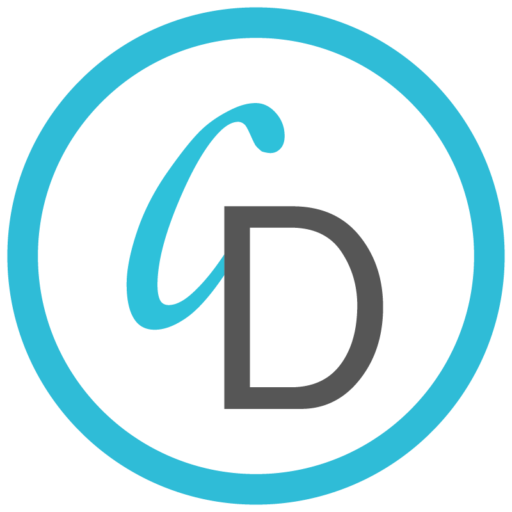our blog
Data Management: 5 Ways to Clean Up Your Donor Data
It’s a data-based world, and you’re living in it. If you’re using any sort of fundraising software to help you manage your nonprofit’s operations and donor engagement, you’ve probably gathered an abundance of data on your donor base. However, if you have started digging into this data, you’ve probably encountered a very common problem– there might be too much of it to manage effectively!
Having a thorough database is certainly a blessing when it comes to generating insights about your donors, but it can also quickly become overwhelming for your team struggling to wade through the mass of information.
Thankfully, you can still reclaim your database and all of its useful information. By implementing a few data management protocols and best practices you’ll regain control of your donor data in no time. Check out a few ways to get started
- Set aside dedicated time for cleaning your database.
- Consider integrating your tools whenever possible.
- Empower donors with more control of their data.
- Segment your key information for easier analysis.
- Create processes for uniform data management going forward.
By using these 5 methods to tackle your data, you’ll soon transform a jumble of information into more actionable insights for your fundraising and outreach campaigns. Read more from our friends at DNL OmniMedia.

Set aside dedicated time for cleaning your database.
Whether you’re just beginning to implement a serious data management process or you’re looking to improve your strategies, it’s important that you set aside dedicated time for analyzing, tidying, and maintaining your database.
As nonprofit technology evolves and as you grow your toolkit, it becomes easier and easier to gather huge amounts of data regarding your donors. However, the raw, unfiltered data will have little to no use for your staff if it’s not organized in a way that actually makes it easy to use.
Untidy data can quickly snowball into a problem that everyone avoids confronting, and this is the number one reason why so many nonprofits lose control of their data– even after investing in top-of-the-line tools to gather it.
You’ll need to make a big investment of time into your nonprofit data management strategy to initially sort out the usable information. Then, in addition to this initial clean-up, you’re going to need regular, ongoing efforts to maintain your data in the long-term.
Not only is there likely a high volume of data you’ll need to sort out, but there’s also a chance that much of it doesn’t provide any valuable knowledge to your organization. You might be holding on to excessive, redundant, or incorrect information such as:
- Mistakes within donor profiles, like outdated contact info.
- Duplicate profiles, or duplicate fields within profiles.
- Deceased or otherwise lapsed donors.
- Data entered in a non-standard way.
The larger your database becomes, the more information you’ll need to dig through to draw any key conclusions. Culling redundant or useless data from your database is the first (and often most effective) step in cleaning up, but it does require a considerable upfront investment of your team’s time.
While you could spend hours sorting through your data each and every time you need actionable information, you could make the effort right now to get rid of any loose ends and implement concrete strategies to keep your database tidy going forward. Looks like it’s time to roll up your sleeves and get to work!

Consider integrating your tools whenever possible.
One of the most effective approaches to handling your data– and keeping it under control after your initial clean-up– is to integrate your existing nonprofit software into a centralized constituent relationship management system.
Before using integrated tools or upgrading to a more advanced CRM, most nonprofits track their key functions with a handful of piecemeal solutions. While this may work for some smaller organizations, it becomes exponentially difficult to manage multiple platforms once you’ve acquired any large volume of data!
A CRM’s core function is to act as a centralized database for all of your nonprofit’s engagement with donors and other digital operations. Therefore, when exploring CRM solutions for your nonprofit, you want to be thorough in your search.
You have three general options for combining your various donor data solutions– integrating your existing platforms, customizing your current software to have greater functionality, or investing in a new, robust CRM platform that already contains built-in features that you’ll need.
However you approach integrating your toolkit, your centralized donor database system and fundraising tools should allow you to:
- Build complete donor profiles.
- Sort your database into discrete segments for further insight into donor trends.
- Generate customizable reports to determine the success of campaigns.
- Strengthen outreach with built-in donor communication tools that easily generate new engagement data.
Choosing the right CRM platform can be a gamechanger for nonprofits of all sizes. For an example of what one of the most robust solutions looks like, check out the TeamDNL guide to Blackbaud CRM.

Empower donors with more control of their data.
When making a contribution to your nonprofit, donors enter their information into your system– including contact details, payment information, and even employer specifics. You trust them with this initial data entry, so why not trust them to update this information when those data points change?
Giving donors access to edit their own data can significantly relieve your team of the need to manually verify data while maintaining your database. Further, this ability empowers donors to take ownership of their interactions with your nonprofit and allows them to guide the scope of their participation. Self-service options are particularly useful for organizations that rely on active membership or volunteer programs.
Consider optimizing your online member center to allow donors to update their own personal information, including:
- Contact information, including mailing address, email address, and phone number.
- Newsletter preferences.
- Recurring gift amount, schedule, and any billing preferences associated with this process.
- Any P2P fundraising pages they create for future campaigns.
You can take donor accessibility a step further by optimizing your member-facing tools for a streamlined user experience, such as creating a member center that’s optimized for mobile devices in addition to desktop devices. By doing this, you’re empowering your donors to update their information wherever the inspiration hits– whether at home or out and about!

Segment your key information for easier analysis.
Once you’ve purged any unnecessary information clogging your database and thought through how you’ll keep it clean in the future, you can further organize your donor information for more efficient use.
Through segmenting your donors by certain discrete characteristics, you can more easily pull insights from the large database you’ve developed. Segmentation allows you to quickly and clearly view any trends in your data, using the information you’ve already gained access to and optimized for organization.
You should consider factors such as demographics, communication preferences, past donations, previous event and program attendance, employer and business affiliations, personal relationships, general interests and all recorded past interactions with your nonprofit. With this information you can create segments such as:
- Geographic location: Segmenting by geographic location allows you to promote initiatives to the right audiences, such as marketing a fundraising event to members living in the town in which it’s taking place.
- Average gift amount: Organizing by average gift amount gives you information on how large of a donation to expect from different segments of your donorship, as well as what size donation you should ask for.
- Workplace: Segmenting by employer can help you identify donors who work at companies with corporate philanthropy programs. For more information on these practices, check out Double the Donation’s primer on matching gift programs.
- Preferred donation method: Understanding a segment’s preferred donation method allows you to promote specific methods to segments most likely to donate in that manner, increasing the chances they’ll actually do so.
These segments represent just a few helpful classifications. Ultimately, you should segment your data into whichever categories make the most sense for your organization. The main idea is to make sure your CRM platform allows you customize and tag your donor profiles with any useful new data points that you collect.
Keeping these segmentation strategies in mind will help to ensure that your data stays cleanly organized because they require you to tag and input new data in very standardized ways. Whether you’re deciding where to host your next big fundraising event or whether to contact a donor about starting the matching gift process, you’ll be ready to go!

Create processes for uniform data management going forward.
While it may be tempting to clean up your donor data and call it a day– after all, you’ve just completed a comprehensive clean of what was likely a ton of data– you can’t stop just yet.
Creating a long-term process of uniform data management will inform all of your database entries going forward. This last step is crucial in preventing more data pileup in your future! If you can create a clear process of data entry and communicate these best practices to your staff, you’ll prevent future problems long before they occur.
There are a few common data entry errors– that is, entry without uniform protocols– when it comes to database management. You should outline clear rules for handling the following:
- Numerals, such as dates and phone numbers.
- Titles, such as “Mrs.” versus “Mrs”
- Empty fields, as in whether to leave them blank or denote with “N/A”
When not standardized, these simple elements can easily lead to errors in your database, such as duplicate entries. In addition to deciding how your staff should handle commonly mistaken terms, you should also develop processes around correcting any errors you discover, like:
- Immediately delete invalid contact information as soon as it’s discovered.
- Remove profiles of donors who haven’t engaged with your organization in two or more years.
- Delete any duplicate entries, merging any data discrepancies between the two.
- Create a schedule of regular database backups.
- Schedule for regular data audits to check the status of your database management.
Finally, after developing your data management best practices, you need to train your team on these new methods and standards going forward. There’s no point in creating all of these processes if no one knows to use them!
For further information on how to handle your fundraising data with efficiency, specifically regarding which data points can aid in your donor analytics strategy, read more here.
Digital tools have greatly improved and streamlined nonprofit management, specifically in the ways nonprofits can generate insights about their donors, but the sheer amount of data collected can get overwhelming!
With these five solutions, you can begin conducting a thorough clean-up of your donor data and prevent any future confusion. Soon enough, you’ll have a neatly segmented database, teeming with actionable insights. Happy cleaning!
 Charity Dynamics’ partner, DNL OmniMedia, helps nonprofits get a hold on their data management strategies, clean up their databases, and lay out plans for keeping them that way.
Charity Dynamics’ partner, DNL OmniMedia, helps nonprofits get a hold on their data management strategies, clean up their databases, and lay out plans for keeping them that way.
Learn more about how Charity Dynamics can help your organization

